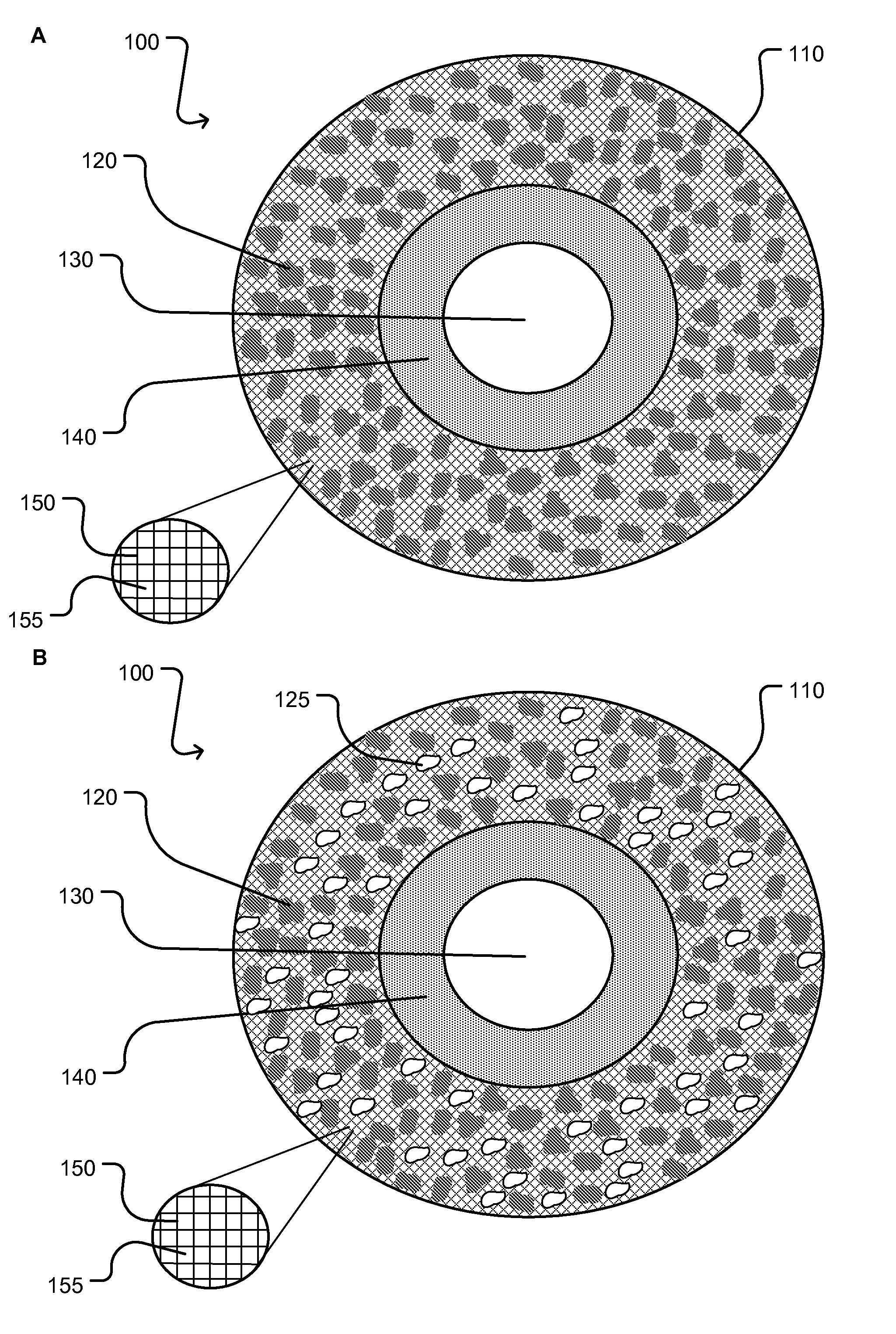Sorbent fiber compositions and methods of temperature swing adsorption
a technology of sorbent fibers and compositions, applied in the direction of machine operation, lighting and heating apparatus, separation processes, etc., can solve the problems of aging of the pc power station infrastructure, adverse effects on agriculture and biodiversity, and rising sea levels
- Summary
- Abstract
- Description
- Claims
- Application Information
AI Technical Summary
Benefits of technology
Problems solved by technology
Method used
Image
Examples
example 1
Fiber Composition Design
[0091]In the present example, a novel hollow fiber based solid sorbent system is considered. The hollow fiber formation is based on the well-known non-solvent phase inversion technique commonly referred to as “wet-spinning” in the field. Polymer solutions comprising solvents, non-solvents, and additives such as lithium nitrate are extruded through a die into a non-solvent quench bath. The non-solvent bath provides the driving force for mass-transfer between the quench bath and the solvent present in the nascent fiber, which results in micro-phase separation and the formation of a porous fiber. The phase separation is best visualized using a ternary phase diagram for the polymer / solvent / non-solvent solution, as seen in FIG. 3. The binodal line represents the divide between one-phase and two-phase regions, and the two-phase region can be further divided into the metastable region and the unstable spinodal region. Spin solutions are made such that the solution e...
example 2
[0093]A post-combustion carbon capture system was designed based on a mixed matrix hollow fiber platform. The mixed matrix hollow fiber platform was chosen for several reasons. First, higher sorption efficiencies can be achieved by utilizing the hollow fiber morphology for supplying cooling agents in the bore of the fiber during sorption and heating agents in the bore during desorption. Secondly, the thin porous walls of the fiber allow for very rapid heat and mass transfer times, a necessity in such demanding feeds. Finally, in the design, the heating and cooling agents in the fibers can simply be steam and water, therefore removing any waste by-products associated with the system.
[0094]The fiber system was designed using a two bed system with no guard bed for a pseudo-steady state continuous operation. The bed actively sorbing CO2 will have liquid water passing through the bores of the fibers, and the bed actively desorbing will have steam passing through the bo...
example 3
Experimental Methodology
[0134]N-methyl-pyrrolodine (NMP) (ReagentPlus™ 99%, Sigma-Aldrich, Milwaukee, Wis.) was used as the solvent in the polymer solutions because it is miscible in water and a strong solvent for cellulose acetate. Methanol (99.8%, ACS Reagent, Sigma-Aldrich) and hexanes (ACS Reagent, >98.5%, Baker) were used for the solvent exchange portion of the fiber formation. Methanol was used to remove excess water from the fibers, and hexanes were used to exchange excess methanol from the fibers. The intent is to replace high surface tension fluids with lower surface tension fluids to prevent capillary forces from collapsing the pore structure during drying. All solvents and non-solvents were used as-received with no purification or modification.
[0135]Zeolite 13X (1-3 micron particles, Sigma-Aldrich) was chosen as the sorbent to be dispersed into the polymer matrix. Once received, the zeolites were dried at 230° C. to drive off any excess organics from synthesis. After dryi...
PUM
| Property | Measurement | Unit |
|---|---|---|
| thickness | aaaaa | aaaaa |
| diameter | aaaaa | aaaaa |
| diameter | aaaaa | aaaaa |
Abstract
Description
Claims
Application Information
 Login to View More
Login to View More - R&D
- Intellectual Property
- Life Sciences
- Materials
- Tech Scout
- Unparalleled Data Quality
- Higher Quality Content
- 60% Fewer Hallucinations
Browse by: Latest US Patents, China's latest patents, Technical Efficacy Thesaurus, Application Domain, Technology Topic, Popular Technical Reports.
© 2025 PatSnap. All rights reserved.Legal|Privacy policy|Modern Slavery Act Transparency Statement|Sitemap|About US| Contact US: help@patsnap.com



